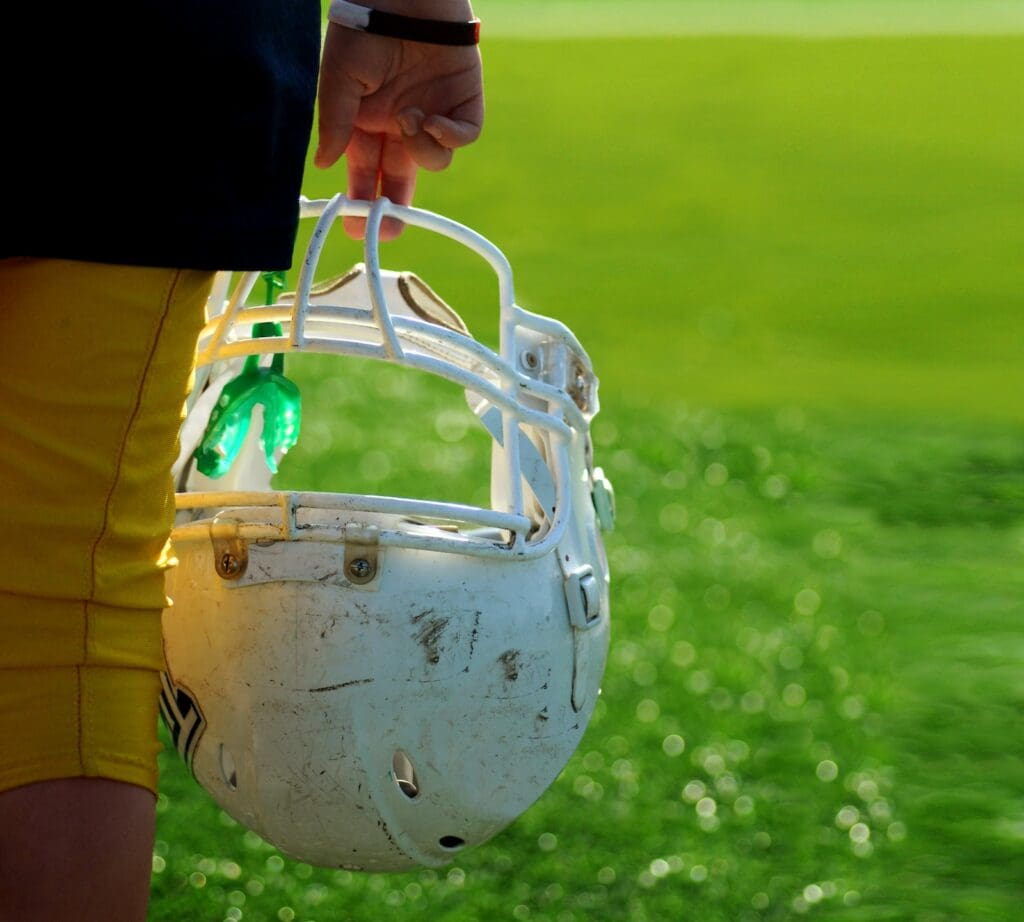
Wearing a mouthguard is a crucial piece of equipment for athletes who participate in contact sports. It not only protects the teeth and gums but also reduces the risk of head and neck injuries. In fact, the American Dental Association recommends wearing custom mouthguards for high-contact sports such as football, hockey, basketball, and boxing.
One of the top advantages of wearing a mouthguard during sports is the prevention of dental injuries. Mouthguards act as a barrier between the teeth and soft tissues, preventing cuts, bruises, and fractures. Without a mouthguard, a blow to the face can result in broken teeth, lacerations, and even tooth loss. Additionally, a mouthguard can protect the jaw and tongue from injury during impact.
Another benefit of wearing a mouthguard is the reduction of head and neck injuries. In contact sports, a hard hit to the jaw can cause the head to jolt back, resulting in a concussion or neck injury. A mouthguard acts as a cushion, absorbing the impact and reducing the force of the blow. This can prevent serious injuries and keep athletes safe on the field or court.
Understanding Mouthguards
Mouthguards are protective devices worn over the teeth and gums during sports activities. They are designed to prevent dental injuries, such as broken teeth, cut lips, and tongue damage. According to the American Dental Association (ADA), more than 200,000 oral injuries are prevented each year by wearing a mouthguard [1].
There are three types of mouthguards: custom-made, stock, and boil-and-bite. Custom-made mouthguards are made by a dentist and are the most expensive option. They are designed to fit the individual’s mouth and provide the best protection. Stock mouthguards are pre-formed and come in different sizes. They are the least expensive option but may not fit well and provide less protection. Boil-and-bite mouthguards are made from a thermoplastic material that softens when boiled. The softened material is then placed in the mouth and molded around the teeth and gums to provide a better fit than stock mouthguards [2].
Custom-made mouthguards are recommended for athletes who play high-impact sports, such as football, hockey, and boxing. These sports have a higher risk of dental injuries, and custom-made mouthguards provide the best protection. Stock mouthguards are suitable for athletes who play low-impact sports, such as tennis and soccer. Boil-and-bite mouthguards are a good option for athletes who cannot afford custom-made mouthguards but still want a better fit than stock mouthguards [3].
It is important to take care of mouthguards to ensure they provide optimal protection and last longer. Mouthguards should be rinsed with water after each use and stored in a ventilated container to prevent bacterial growth. They should also be checked for wear and tear and replaced if necessary [4].
In conclusion, mouthguards are an essential piece of equipment for athletes who participate in sports activities. They provide protection against dental injuries and can prevent costly dental procedures. Custom-made mouthguards provide the best protection but are also the most expensive option. Stock and boil-and-bite mouthguards are suitable for athletes who play low-impact sports or cannot afford custom-made mouthguards. It is important to take care of mouthguards to ensure they provide optimal protection and last longer.
[1] American Dental Association – ADA
[2] Colgate®
Protection Offered by Mouthguards
Mouthguards are dental appliances that fit over the teeth and gums to protect them from dental injuries during sports and other activities. They are designed to absorb and distribute the impact of a blow to the face, reducing the risk of dental trauma, concussions, and other injuries. In this section, we will discuss the different types of protection offered by mouthguards.
Teeth and Oral Health Protection
Mouthguards offer excellent protection for the teeth and gums during sports activities. They can prevent tooth loss, fractures, and other dental injuries that can be costly to repair. According to the American Dental Association (ADA), mouthguard use has been shown to reduce the risk of sport-related dental injuries. Mouthguards can also protect the lips, cheeks, and tongue from cuts and bruises when impacted.
Jaw and Head Safety
In addition to protecting the teeth and gums, mouthguards also offer protection to the jaw and head. A direct blow to the face can result in a lot of tooth trauma. Not only can your teeth be completely knocked out, but they can also become dislodged, cracked, chipped, or loosened, resulting in further injuries down the line. A mouthguard provides a cushion to reduce the impact of the blow, which can help prevent jaw fractures, concussions, and other head injuries.
Prevention of Soft Tissue Injuries
Mouthguards can also help prevent soft tissue injuries. They can protect the lips, cheeks, and tongue from cuts and bruises when impacted. Soft tissue injuries can be painful and take a long time to heal, so it’s important to take steps to prevent them. Mouthguards are an effective way to reduce the risk of soft tissue injuries during sports activities.
In summary, mouthguards offer excellent protection for the teeth, gums, jaw, and head during sports activities. They can prevent dental injuries, concussions, and other head injuries, as well as cuts and bruises to the soft tissues of the mouth. By wearing a mouthguard, athletes can enjoy their sports activities with confidence, knowing that they are protected from dental and oral injuries.
Comfort and Convenience of Mouthguards
When it comes to wearing a mouthguard during sports, comfort and convenience are important factors to consider. Here are the different types of mouthguards and how they offer comfort and convenience to the wearer.
Custom-Made Mouthguards
Custom-made mouthguards are made by a dentist who takes an impression of the wearer’s teeth. This type of mouthguard offers the best fit and comfort since it is specifically designed for the individual’s teeth. They also allow for easy breathing and speaking during sports activities.
Mouth-Formed Mouthguards
Mouth-formed mouthguards, also known as boil-and-bite mouthguards, are made from a thermoplastic material that can be molded to fit the wearer’s teeth. They offer a better fit than stock mouthguards and are more comfortable to wear. However, they may not provide the same level of protection as custom-made mouthguards.
Stock Mouthguards
Stock mouthguards are pre-made and come in different sizes. They are the least expensive option but offer the least amount of protection and comfort. They may also make it difficult to breathe and speak during sports activities.
Overall, wearing a mouthguard during sports is crucial for protecting the teeth and preventing injuries. Custom-made and mouth-formed mouthguards offer the best fit and comfort, while stock mouthguards are the least expensive option. It is important to choose a mouthguard that fits well and allows for easy breathing and speaking during sports activities.
Mouthguards in Different Sports
When it comes to sports, wearing a mouthguard can be beneficial in many ways. In this section, we will explore the advantages of wearing a mouthguard in different sports. The two main categories of sports are contact and non-contact sports. Let’s take a closer look at how mouthguards can help in each of these categories.
Contact Sports
Contact sports are those that involve physical contact between players. Examples of contact sports include football, hockey, boxing, lacrosse, wrestling, rugby, and martial arts. In these sports, the risk of dental and orofacial injuries is high due to the physical nature of the game. Wearing a mouthguard can significantly reduce the risk of such injuries.
In football, for example, where players are constantly tackling each other, wearing a mouthguard can protect against broken or chipped teeth, as well as prevent cuts and bruises to the mouth and lips. Similarly, in hockey, where players use sticks to hit a puck, a mouthguard can protect against dental injuries caused by the stick or the puck.
Boxing is another sport where mouthguards are essential. They protect the teeth and gums from being knocked out or damaged by punches. In martial arts, mouthguards can protect against jaw fractures and other injuries caused by kicks and punches.
Non-Contact Sports
Non-contact sports are those that do not involve physical contact between players. Examples of non-contact sports include basketball, gymnastics, soccer, skateboarding, biking, volleyball, mountain biking, skiing, baseball, and softball. Even in non-contact sports, wearing a mouthguard can be beneficial.
In basketball, for instance, players may accidentally collide with each other, resulting in dental injuries. A mouthguard can protect against such injuries. Similarly, in gymnastics, where athletes perform acrobatic moves, a mouthguard can protect against injuries caused by falls.
In soccer, mouthguards can protect against dental injuries caused by accidental collisions with other players or the ball. In skateboarding and biking, mouthguards can protect against injuries caused by falls.
In summary, wearing a mouthguard can be beneficial in both contact and non-contact sports. It can protect against dental and orofacial injuries caused by physical contact, falls, and collisions. Therefore, it is recommended that athletes wear mouthguards during sports activities to protect their teeth and gums.
Role of Mouthguards in Injury Prevention
Mouthguards are an essential piece of safety equipment for athletes, particularly those who play contact sports. According to the American Dental Association (ADA), wearing a properly fitted mouthguard can significantly reduce the incidence and severity of oral injury in sporting or recreational activities, particularly those with a significant risk of dental trauma or orofacial injury.
Mouthguards protect the mouth and teeth from serious injury during sports-related activities. They can prevent chipped or knocked-out teeth, damage to the tooth pulp, and soft-tissue injury to the gums, lips, and inner cheeks. A study published in Dental Traumatology found that mouthguards helped lower the prevalence of dental trauma among athletes of contact sports.
Mouthguards are particularly important for athletes who play sports that involve body contact or flying equipment, such as football, hockey, and baseball. They can also help prevent head injuries by cushioning the blow to the jaw and reducing the risk of concussion.
There are different types of mouthguards available, including stock mouthguards, boil-and-bite mouthguards, and custom-made mouthguards. While stock mouthguards are the least expensive, they are also the least effective because they do not fit properly. Boil-and-bite mouthguards are a better option because they can be molded to fit the athlete’s teeth, but they may not provide the same level of protection as custom-made mouthguards.
Overall, wearing a mouthguard is a simple and effective way to prevent serious injuries during sports-related activities. Athletes should choose a mouthguard that fits properly and provides adequate protection for their specific sport.
Maintenance and Care of Mouthguards
To ensure the longevity of a mouthguard, proper maintenance and care are necessary. Here are some tips on how to maintain and care for a mouthguard:
- Rinse the mouthguard with cold water or mouthwash before and after each use. This helps to keep the mouthguard clean and free from bacteria.
- Brush the mouthguard with a toothbrush and toothpaste regularly. This helps to remove any debris that may have accumulated on the mouthguard.
- Store the mouthguard in a clean, dry container with ventilation when not in use. This helps to prevent the growth of bacteria and prolongs the life of the mouthguard.
- Avoid exposing the mouthguard to high temperatures or direct sunlight, as this can cause the mouthguard to warp or melt.
- Check the mouthguard regularly for signs of wear and tear, such as holes or cracks. Replace the mouthguard if it is damaged or no longer fits properly.
By following these simple steps, athletes can ensure that their mouthguards remain clean, hygienic, and effective at protecting their teeth and mouth during sports activities.
American Dental Association’s Stand on Mouthguards
The American Dental Association (ADA) recommends wearing a properly fitted mouthguard to reduce the incidence and severity of oral injury in sporting or recreational activities, particularly activities with significant risk of dental trauma or orofacial injury. According to the Council of Scientific Affairs, mouthguard use has been shown to reduce the risk of sport-related dental injuries. The Council on Advocacy for Access and Prevention also supports the use of mouthguards in sports.
The ADA notes that mouthguards can provide protection for the teeth, lips, tongue, and cheeks. The types of mouthguards include stock mouthguards, boil-and-bite mouthguards, and custom-made mouthguards. All three types provide some protection, but they vary in cost, comfort, and durability. Stock mouthguards can be bought in most sporting goods stores but come in limited sizes (usually small, medium, and large). Mouth-formed boil-and-bite mouthguards can be purchased at sporting goods stores and can be customized to fit the individual’s mouth. Custom-made mouthguards are made by a dentist and provide the best fit and protection.
The ADA recommends that athletes wear mouthguards during both practice and games. The mouthguard should fit properly, be comfortable, and not restrict breathing or speech. The ADA also recommends that mouthguards be replaced after each season or when they become worn or damaged.
In conclusion, the ADA strongly recommends the use of mouthguards in sports to reduce the risk of oral injury. Mouthguards can provide protection for the teeth, lips, tongue, and cheeks, and they come in various types to fit the individual’s needs. Athletes should wear mouthguards during both practice and games, and they should replace their mouthguards after each season or when they become worn or damaged.
Conclusion
In conclusion, wearing a mouthguard when playing sports can provide numerous benefits to athletes. Not only can it prevent dental injuries, but it can also reduce the risk of concussions and other head injuries. Mouthguards can also help athletes breathe better and improve their overall performance.
Despite the many benefits of mouthguards, their use is still fairly limited in sports. Some athletes may not be aware of the potential benefits, while others may be deterred by the cost or lack of requirement for their use. It is important for coaches, parents, and athletes themselves to understand the importance of mouthguards and to encourage their use.
Athletes should also be aware of the different types of mouthguards available and choose one that is appropriate for their sport and level of activity. Custom-fitted mouthguards may provide the best protection and comfort, but boil-and-bite and stock mouthguards can also be effective.
Overall, wearing a mouthguard is a simple and effective way for athletes to protect themselves from dental and head injuries while playing sports. By making mouthguards a regular part of their sports gear, athletes can stay safe and perform at their best.



